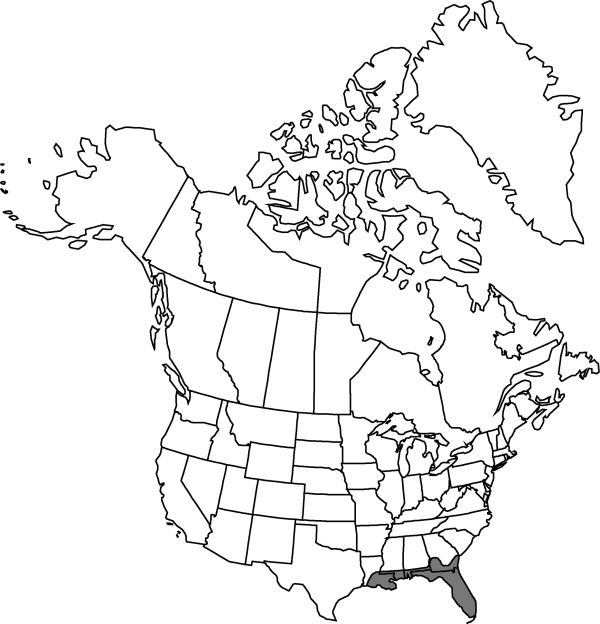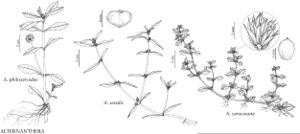Alternanthera sessilis
Cat. Pl. Hort. Monsp., 77. 1813.
Herbs, annual or perennial, 2–6 dm. Stems procumbent, pubescent in lines, glabrate. Leaves sessile; blade elliptic to oblong or oblanceolate, 1.2–5 × 0.5–2.2 cm, apex obtuse to acute, glabrous. Inflorescences axillary, sessile; heads white, subglobose or ovoid, 0.5–1.1 cm; bracts keeled, ca. 1/2 as long as tepals. Flowers: tepals white, ovate to lanceolate, 2–3.5 mm, apex acuminate, hairs not barbed; stamens 5; anthers 3–5, globose; pseudostaminodes subulate, margins laciniate. Utricles included within tepals, sides exerted in mature fruit, greenish stramineous, obcordate, 1.3–1.7 mm, apex retuse. Seeds lenticular, 0.9–1.1 mm.
Phenology: Flowering summer–early fall.
Habitat: Wet disturbed areas
Elevation: 0-20 m
Distribution

Ala., Fla., Ga., La., Mexico, West Indies, Central America (Belize, Costa Rica, Guatemala, Nicaragua, Panama), South America, Africa, Asia.
Discussion
Alternanthera sessilis is reported from Maryland, Mississippi, South Carolina, and Texas, but I have seen no specimens from these states.
Selected References
None.
